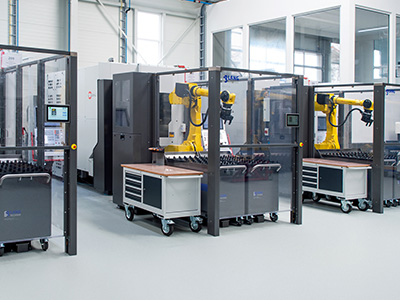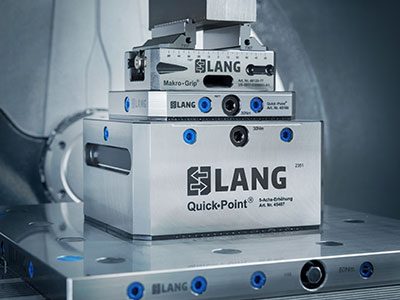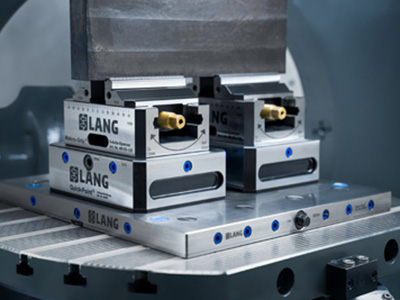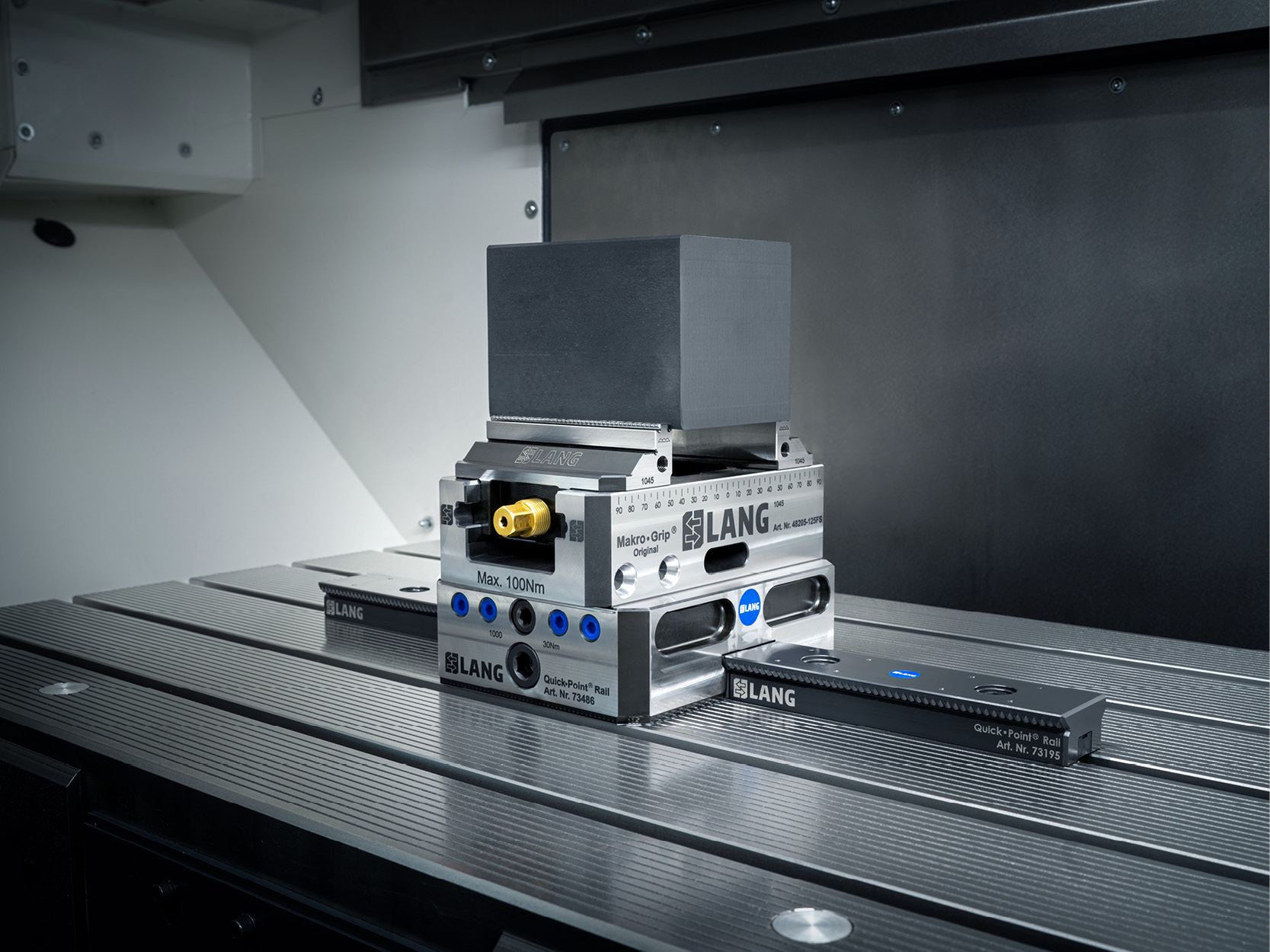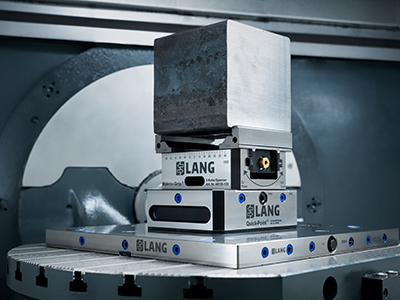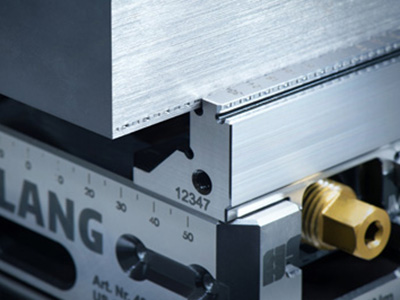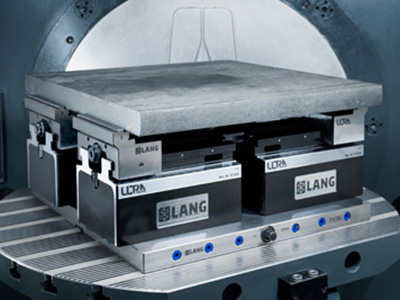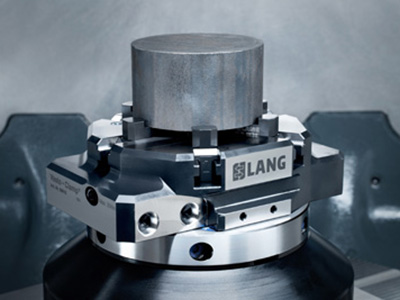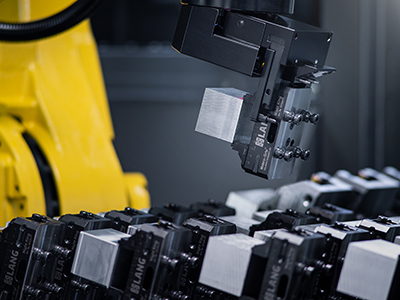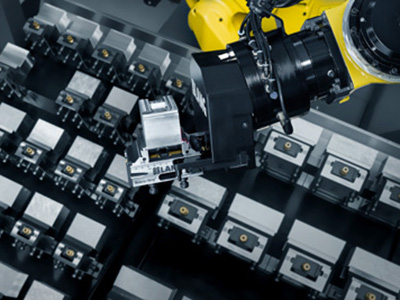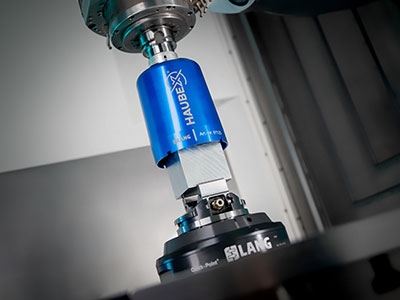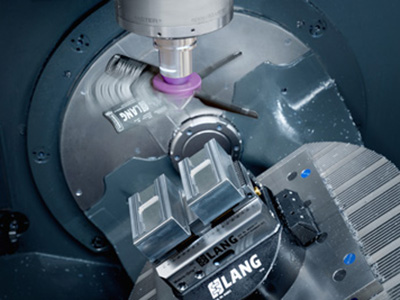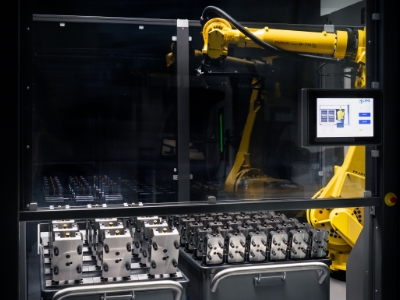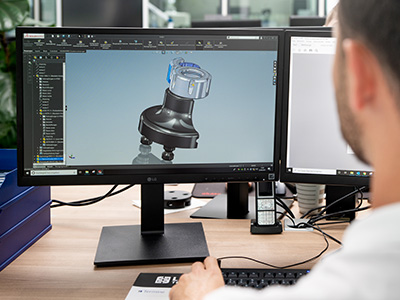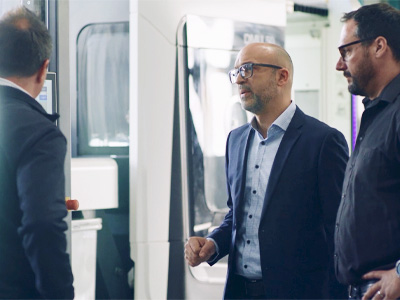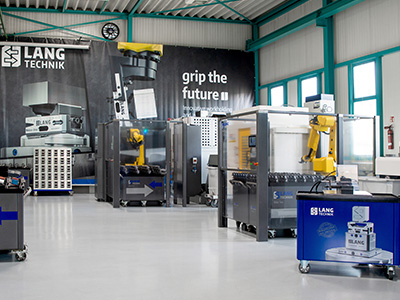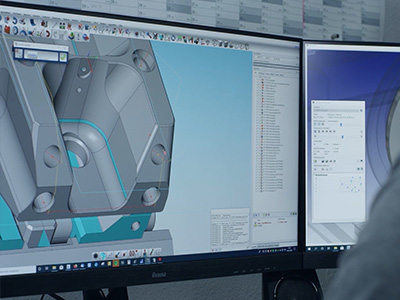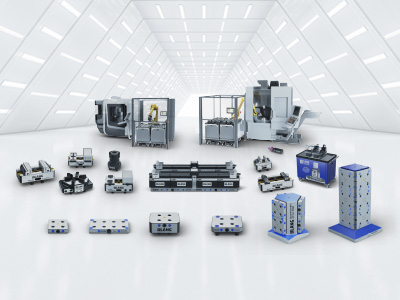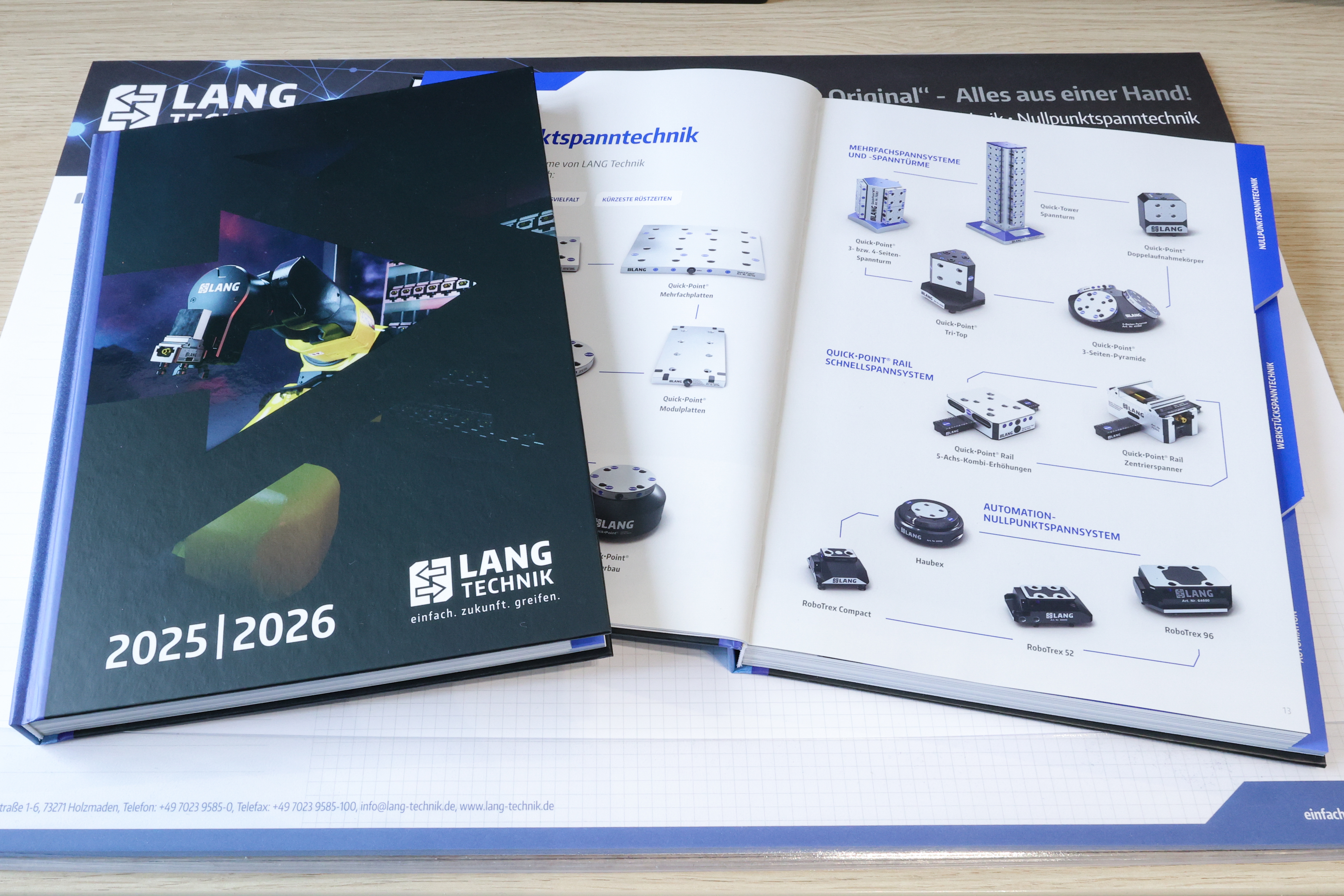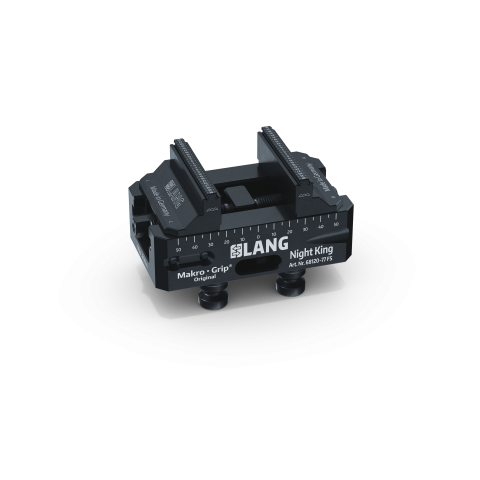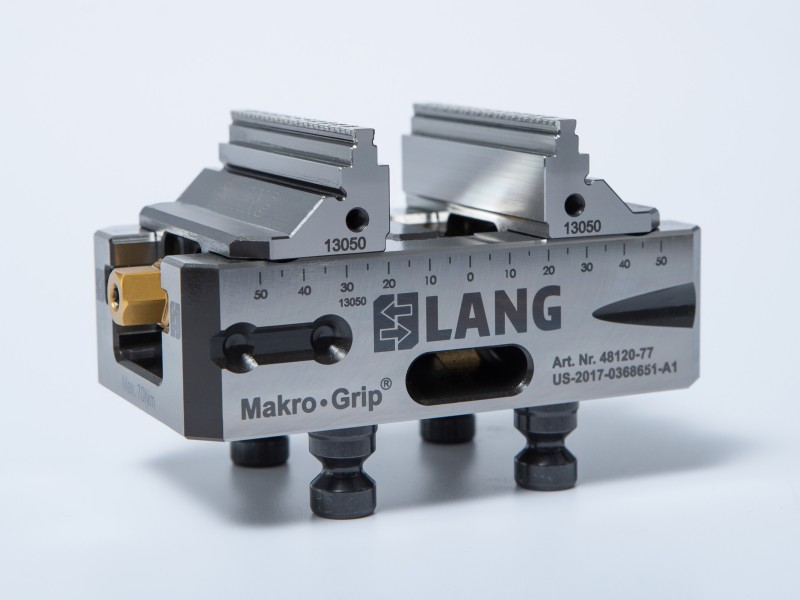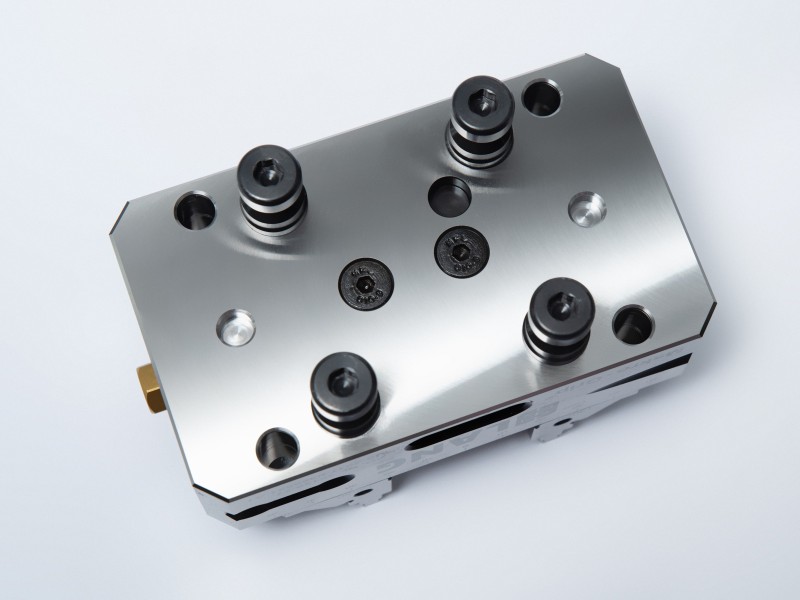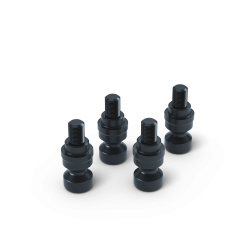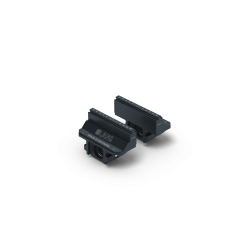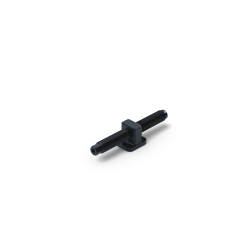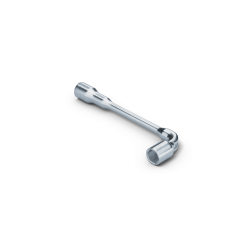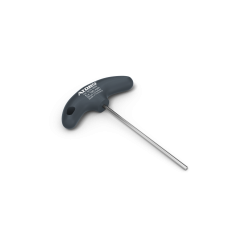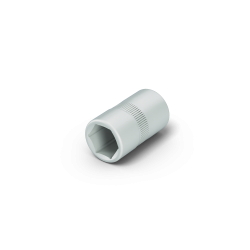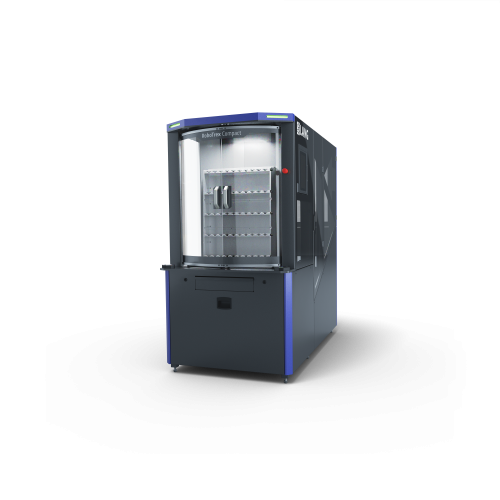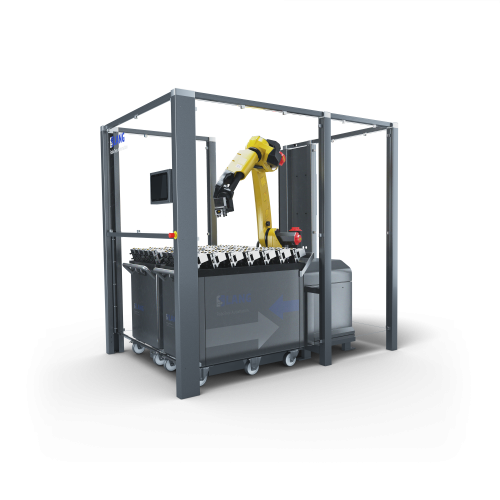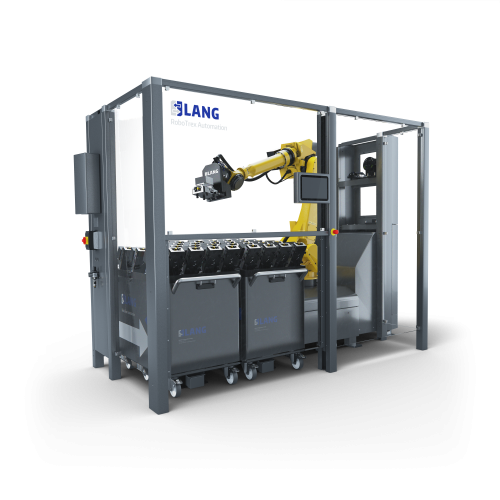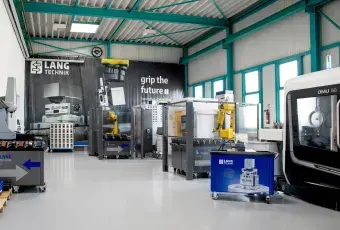Makro•Grip® FS 77, Night King
Jaw width 77 mm, Clamping range 0 - 120 mm, with continuous / full serration
Item No. 68120-77 FS
Please note: For clamping pre-stamped workpieces in Makro•Grip® FS 5-axis vises, you need the matching stamping jaws of the Makro•Grip® FS series.
Learn more
Please note: For clamping pre-stamped workpieces in Makro•Grip® FS 5-axis vises, you need the matching stamping jaws of the Makro•Grip® FS series.
Learn moreKey data at a glance
The Night King is also available with continuous holding serration (full serration). Due to its favorable price, the popular 5-axis vise is mainly used in automated manufacturing in large quantities. Its intended use is exclusively in raw part machining / 5-sided machining. Its compact design mainly benefits the storage capacity in the RoboTrex & RoboTrex Compact automation system. A large number of vises can be accommodated in a very small space. In the milling operation itself, the compactness ensures perfect accessibility, which means that many components can be completely finished in just one clamping operation.
More features:
Single components features:
Clamping Studs
Spare Jaws
Spindle + Center Piece
Packaging unit = 5 pieces
Makro•Grip® FS Stamping Technology and Raw Part Clamping
- Holding force Thanks to a new stamping and holding serration, up to 60% higher holding forces can be achieved with Makro•Grip® FS.
- Process reliability Clamping with Makro•Grip® FS offers maximum process reliability and allows even higher cutting rates and faster milling processes.
- Accessibility The compact Makro•Grip® FS self-centering vises guarantee ideal accessibility in the 5-axis machining of raw parts.
Services
We will be happy to advise you individually and adapt your products for the best possible application.
Modified Clamping depth
Sometimes raw material has a certain radius, which makes it hard to clamp it on the 3 mm step of the Makro•Grip® jaws. This can be solved by lowering the clamping step so that the workpie-ce is held above the radius. On the one hand, this provides a resting surface for the workpice, on the other hand it ensures safe clamping.


